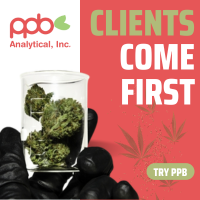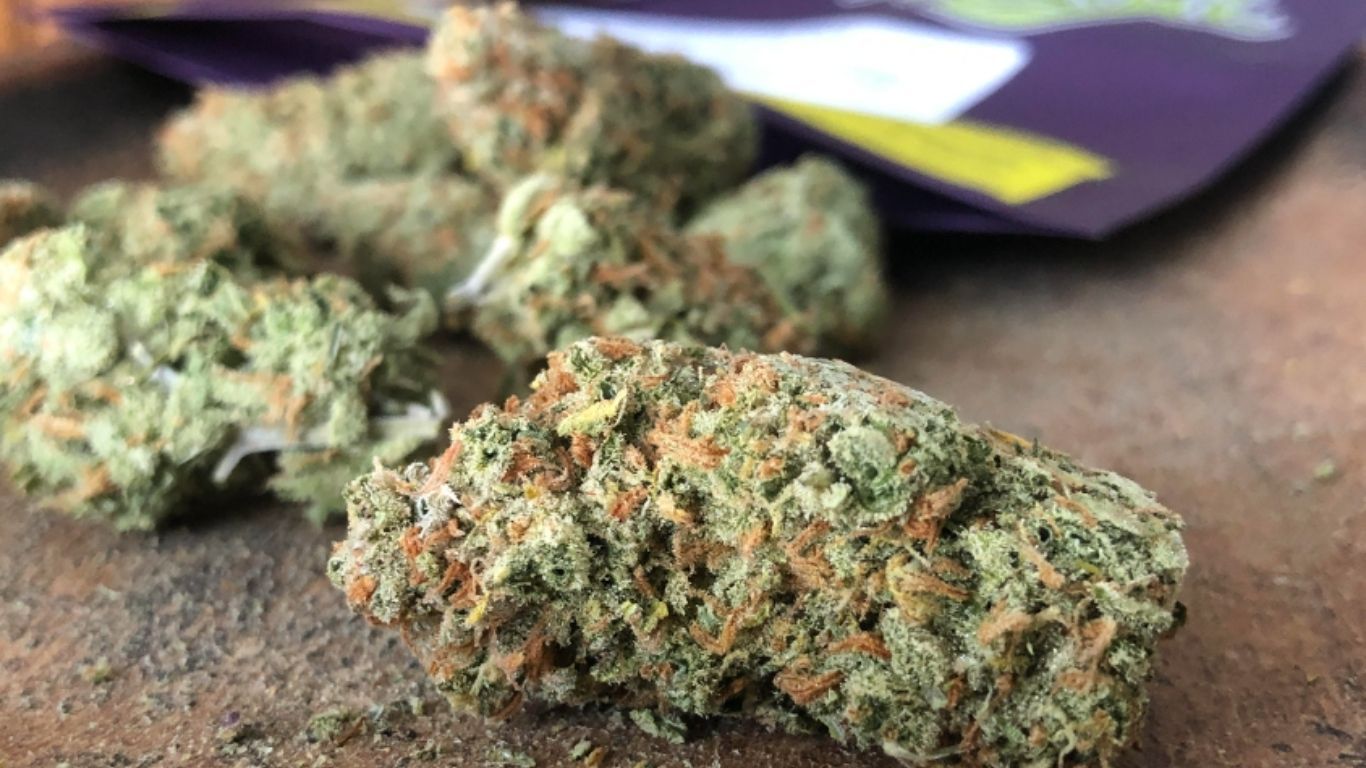
Following Ontario’s most recent product call in August, the provincial cannabis distributor says they are already seeing more submissions and more new products than ever before. But some retailers and producers say that while the changes come with some upsides, they also come with new challenges.
In July, the OCS informed producers that they were changing their product call program for producers from every two months to every four months, while also changing how new products can be pitched to the provincial distributor in these new, quarterly product calls.
Whereas the OCS had previously held product calls every two months, which allowed producers to pitch their products if they were fully ready for sale—for example, a crop needed to be fully harvested and tested and ready to be packaged—the new quarterly program allows cannabis growers and processors to also pitch products that are not yet ready for sale. If the OCS does tentatively approve those products, they can then be released into the market at a later date, pending final approval.
As an example, this means that growers currently projecting a harvest later this year, such as outdoor growers, will still potentially be able to release their fall harvests for sale into Ontario in January.
Earlier this year, the OCS also announced a “flow-through” pilot project that will eventually allow producers to purchase products through the OCS that are otherwise not carried in the provincial warehouse. The program is currently being managed as a pilot project with a small handful of cannabis producers, but Ontario plans to expand the program to other producers and retailers later this year or in early 2022.
“Pending a successful pre-pilot and pilot launch, we are expecting a soft launch to happen in time for Q4 this year”, Daffyd Roderick, OCS Senior Director, Communications & Social Responsibility told StratCann earlier this year.
“A very small group of LPs who are representative of the geographical and size distribution were selected to participate in the pre-pilot stage, along with our retailers from the ORCAP (Ontario Recreational Cannabis Advisory Panel) program, simply to test the mechanics of the program. Once this is done, the program will open in the fall to all retailers with a small, but expanded SKU base from a wider set of LPs who expressed interest in the program and have products that fit the criteria. Pending success, we expect to see a larger amount of SKUs representing a wider variety of use cases leveraging the flow-through model as it hits a run state in Q1 2022.”
“Pending success, we expect to see a larger amount of SKUs representing a wider variety of use cases leveraging the flow-through model as it hits a run state in Q1 2022.”
Daffyd Roderick, OCS Senior Director, Communications & Social Respon
Similarly, Bev Altberg, the new Vice President of Merchandising, Marketing, and Ecommerce at the OCS, says the first new product call under the new system was a success.
“We saw more product submissions come through in this call than ever before,” says Altberg. “Starting with the pre-submission process, the team has been spending weeks working with LPs to bring the most compelling and diversified offer to the Ontario market. We selected the assortment with Licensed Retailer feedback, consumer insights, global market trends, and current brand and performance as our guides. We take those data points seriously as we know retailers and consumers could not navigate the thousands and thousands of SKUs without some curation.”
“Over the months of October to January, we will be launching more product into the Ontario market than ever before,” says Altberg. “We saw some exciting innovations, including: holiday-themed edibles, topicals, beverages, and accessories; some harder to find cannabinoids across multiple form factors; new genetics; new categories (rolled extracts!); and many size and format extensions of proven winning strains and pre-rolls.”
“This call marks the last call before the OCS moves into its new Product Call process which allows more time for our team to discuss product pipelines with LPs and to support the execution and commercialization of the product in the marketplace.”
Some producers and retailers, however, are a little less enthusiastic.
“In terms of what I’m seeing, nothing’s changed for me,” says Alex Stupor, the owner and manager at Above the Clouds in Etobicoke.” It was challenging then, and it’s challenging now, so there’s been no change that I’ve seen yet.”
The biggest challenge that small, independent retailers face, he says, is a lack of consistency in supply. Since each retail store can only place an order from the OCS once a week, retail chains with multiple locations can often have several different days of the week that they can order, whereas a single independent store can only order once a week, meaning a certain product might no longer be available by the time they get a chance to order it.
“The reason why this is challenging is it’s in stock, then out of stock, in stock, then out of stock,” he continues. “There’s just no stability. You bring something in that maybe there’s some excitement around, your customers like it, and then you go to bring it in again and you can’t get it because it’s not available. So your customers come in and ask for it and we have to tell them we’re sorry, we don’t have it.”
“There’s just no stability. You bring something in that maybe there’s some excitement around, your customers like it, and then you go to bring it in again and you can’t get it because it’s not available. So your customers come in and ask for it and we have to tell them we’re sorry, we don’t have it.”
Alex Stupor, the owner and manager at Above the Clouds in Etobicoke
“Then there’s the whole multi-chain multi-store conglomerates that have a whole bunch of stores. So for them, they get to order basically any day of the week and then just shift product to another store.”
Norton Singhavon, Founder and CEO of Avant Brands, which sells several of their brands into the OCS, says he sees the changes being beneficial to smaller growers like the growers he represents.
“In aggregate, we believe the changes will benefit smaller craft producers like us,” says Singhavon. “We will have more time for R&D, which is critical to successful product innovation. Moreover, with the OCS now requesting supporting research and data, we will have an opportunity to prepare and present more compelling product proposals.
“Currently, the OCS is doing a lot of things right,” he continues. “The new initiative for further category innovations is going to greatly benefit AVANT Brands moving forward. However, we see opportunity for improvement with respect to the process for product format changes. The current system creates a bottleneck when a LP wants to change product elements such as pack format (e.g. 24 pack -> 12 pack), which tends to cause supply issues for the marketplace.
Mike Cochran, the owner of Cannabis Grey Bruce, a retailer with three locations in Ontario and two more on the way, says he thinks if the flow-through program works as intended, it could really help smaller growers and retailers. But he’s also worried it may end up only benefiting the large growers and chains of retailers.
“The big guys, the big retail chains, aren’t interested in dealing with the craft producers,” explains Cochran. “They want to deal with the big LPs. So I think there’s a great opportunity for micro retailers like ourselves to deal with the small producers. I think it will be a great thing, as long as the OCS can implement it practically.”
“In a perfect world, I think it will work, but I’m skeptical of how it will be implemented. The industry is moving in baby steps so I’m cautiously optimistic it will change. I want to look at the glass as half-full, but right now I’m looking at it and it’s half-empty, and it’s very discouraging.”
“The big guys, the big retail chains, aren’t interested in dealing with the craft producers. They want to deal with the big LPs. So I think there’s a great opportunity for micro retailers like ourselves to deal with the small producers. I think it will be a great thing, as long as the OCS can implement it practically.”
Mike Cochran, the owner of Cannabis Grey Bruce
John Fowler, the president at Muskoka Grown, another mid-sized cannabis producer in Ontario, echoes Cochran’s cautious optimism.
“To me, any innovation and move to change and do things differently is welcome,” says Fowler. “This type of supply chain is new and it takes some time to figure things out. So from my view, changes like that are challenging in the short term, especially when they come with limited amounts of notice, so more communication and alignment with all the different players in the supply chain is better.”
“But I think some of the advantages here in terms of the longer term planning you get from the multiple release dates you get from this most recent product call, and also the ability to talk about new products that aren’t yet in the supply chain, I think that’s where the biggest challenge lies.”
“I think the devil is in the details in understanding the real motivation for it and what it’s there for,” continues Fowler. “I’ll use the example of farmgate, where it sounds great, but the way it was rolled out in the end, it really isn’t a boon to small producers who might look at farmgate as a way of staying in business. With respect to flow-through, it could open up a lot of doors for retailers and producers to differentiate offers and find a better path to market. But they really need to look at availability, category management, and markup or fees to see if it’s really a game-changer in terms of availability for Ontario consumers, or if it’s really just pushing some of the inventory management out of the OCS warehouse and into a secondary warehouse. So hopefully we get those details in the coming months.
Cochran agrees.
“If the flow-through model works according to what I’ve been told, I can go to a craft producer and I can say “I want to buy fifteen thousand grams over twelve months, reserve it. I’ll take it in these lots,” says Cochran. “So I would like to see it go to the OCS, where it’s reserved for me. I can buy it.”
“But the big guys, the big retail chains, aren’t interested in dealing with the craft producers. They want to deal with the big LPs. So I think there’s a great opportunity for micro retailers like ourselves to deal with the small producers. I think it will be a great thing, as long as the OCS can implement it practically.
“Over the months of October to January, we will be launching more product into the Ontario market than ever before. We saw some exciting innovations, including: holiday-themed edibles, topicals, beverages, and accessories; some harder to find cannabinoids across multiple form factors; new genetics; new categories (rolled extracts!); and many size and format extensions of proven winning strains and pre-rolls.”
Bev Altberg, Vice President of Merchandising, Marketing, and Ecommerce at the OCS,
Back at Above the Clouds in Etobicoke, Alex Stupor shares that skeptical outlook.
“Time will tell,” says Stupor. “I am skeptical of what the OCS is doing. I feel the flow-through was demanded by the big conglomerates and I feel like their game plan is they need to diversify themselves in terms of menu. So a producer can own a retail chain, and can create white label products that are exclusively for their own retail stores. So they want the flow-through program to have X product that is white labeled to a specific retail chain.”
“Small independent guys like myself can’t use those white label programs or branded products because the minimum quantities for producers are too much for the small independent stores. So 1,000 units is too much for an independent store, but it’s nothing for the big guys with several stores like Tokyo Smoke and Canopy, for example. Why would an independent guy want a Tokyo Smoke branded vaporizer?”
Chris Marmion, head of Sales and Marketing at Carmel Cannabis, an Ontario producer focusing on small batch “craft” products, says he thinks that overall, the changes are positive, especially for smaller growers who want to ensure their consumers get the freshest possible product. On the other hand, he says he thinks it will be harder for brand new products to reach the Ontario market with a four month gap between product calls.
“One of the issues we were running into (before the change) is once we received approval on a product, we would have to convert it to finished goods within about a week, which is a challenge. For larger producers with very big lots that they may have already harvested and packaged weeks or months beforehand, it’s fine. But for small craft producers like ourselves it’s a challenge because we want to ensure our consumers get the best, freshest product we can provide.
“So I think the shift to a quarterly submission model is better in the sense that it should allow for better planning and fresher product. Because it gives you a little more confidence when you can have a product accepted, or at least tentatively accepted beforehand. So for the most recent product call, we now have products that will make it to market in January, and we’ve never had that kind of guarantee to a listing that much in advance and that’s really nice.”
But with the new flow through program, he says that so far it appears to only be serving the interests of larger producers and larger retail chains, who in some cases are owned by the same parent company. These companies can then white label products meant to be sold in their own retail chains, rather than smaller, independent retailers.
“The interesting angle that I see with the flow through is that what used to look like an olive branch for smaller producers to get to market, it now appears as if it’s a way for retailers and large producers to perhaps partner on white labeling,” says Marmion.













